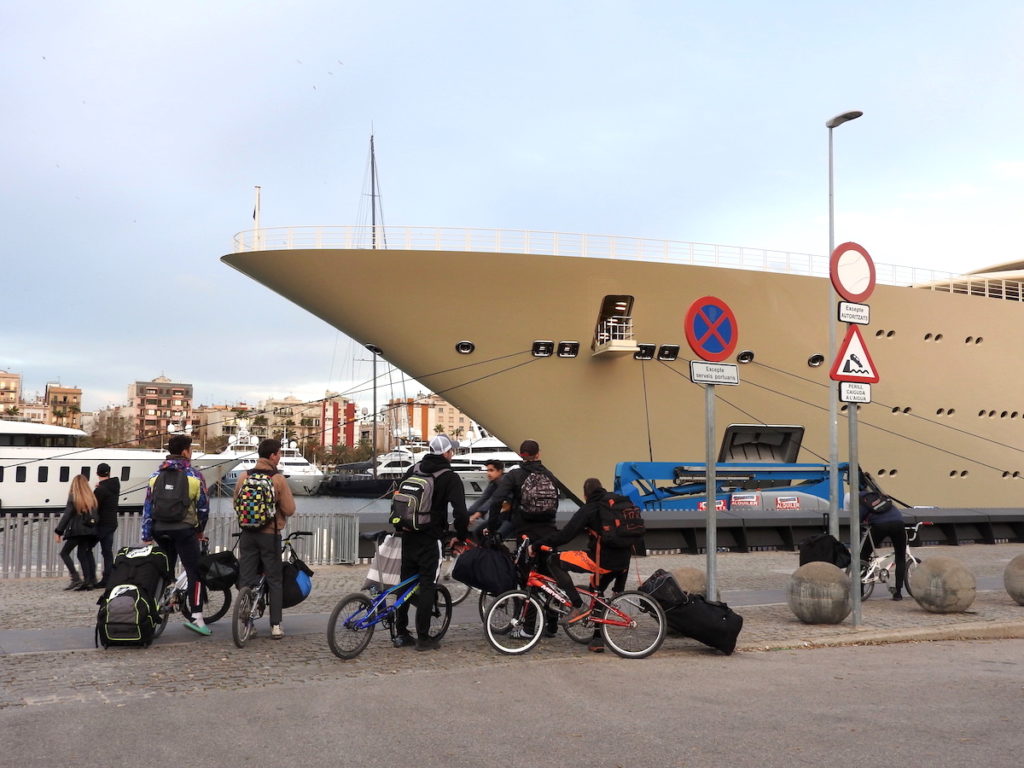
Károly Méhes fondly recalls his trips to the Catalan capital Barcelona for winter testing at Circuit de Barcelona-Catalunya.
Circuit images by E. Kulcsár. Barcelona images by F1Destinations.com.
The ancient Gothic District, Sagrada Familia – Barcelona doesn’t really need any introduction. On mild February days, it is always fun to stroll along La Ramblas or stop for a coffee at sunny Barceloneta beach. And head to the track, of course.


Montjuïc Park
If you follow the history of Formula 1, you’ll know that Barcelona once had its own Grand Prix circuit, Montjuïc Park. This street circuit was established in 1969 and the Spanish Grand Prix was held there every second year, alternating with Jarama, near Madrid. The sad end of Montjuïc came in 1975 when the rear wing of Rolf Stommelen’s Lola failed on lap 25, causing a huge accident that killed several spectators and left Stommelen severely injured.
The race was red flagged on lap 29, handing Jochen Mass his solitary Formula 1 victory. Half points were awarded, as the race hadn’t reached 75% distance. The last ½ point for sixth place went to Lella Lombardi – she remains the only female driver to have scored any World Championship points.
Montjuïc Park is a pleasant place for a walk, even in the winter. it is close to the Olympic Village and Stadium of the 1992 Olympic Games. From the hill, you can look down over the teeming city. It is not surprising that Benetton, which was famous for its extravagant car launches, chose Montjuïc Park as the place to launch their 2000 season with drivers Fisichella and Wurz.



Circuit de Barcelona-Catalunya
The home of the Spanish Grand Prix since 1991, Circuit de Barcelona-Catalunya is actually quite some distance from the pretty downtown era of Barcelona. North East of the city, amongst rolling hills, you will find the track between the towns of Montmeló and Sabadell.
During the height of the Alonso era, the winter tests were a compulsory pilgrimage for the Spanish fans. They also had the Catalan driver Pedro de la Rosa to cheer on, and now Carlos Sainz. The daily ticket prices, under 20 EUR, are a bargain and whilst the first week of testing was marred by snowfall last year, the weather is generally pleasant – in the mid-high teens with warm sun in the afternoons.
It’s a long day for those of us working in the Paddock. The cars are on track from 9am to 6pm, with a one-hour lunch break, and the sun is setting by the end, painting the cars in beautiful colours. There’s always a chance to find the drivers and team personnel for interviews and to collect the latest rumours about the upcoming season.


Pre-season testing is also the first opportunity to see old faces in new team colours. I clearly remember the return of Michael Schumacher with Mercedes in 2010 – it was almost surreal to not see him in the red of Ferrari red. The rookies also appear for the first time, though most of them these days are already familiar faces from GP3 and Formula 2. Some of them are still shy on debut (Kvyat, Ocon), others are full of confidence like Lance Stroll in 2017, despite his numerous mistakes and small crashes during his first runs.
It’s always good to be back after a long winter and by the time the tests have wrapped up, it’s only a few weeks until the new season kicks off in Melbourne. Bring it on!


